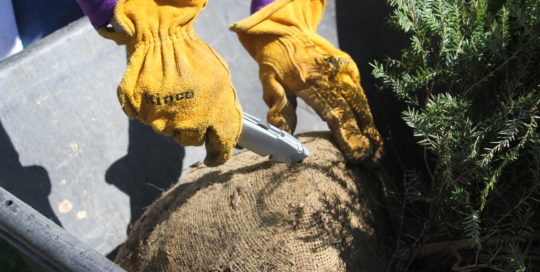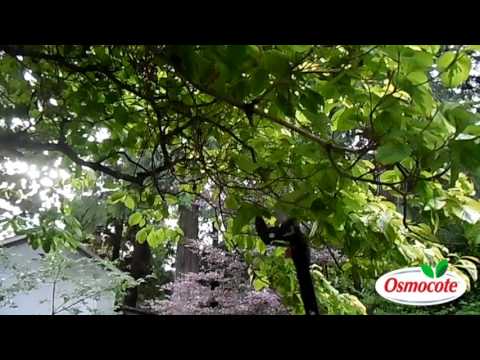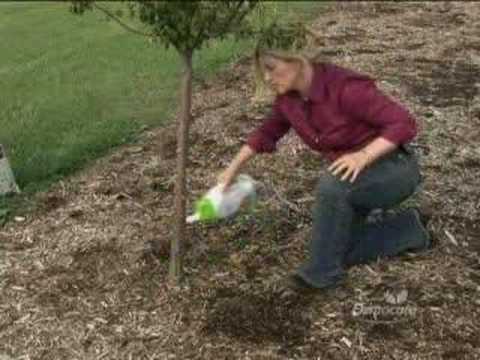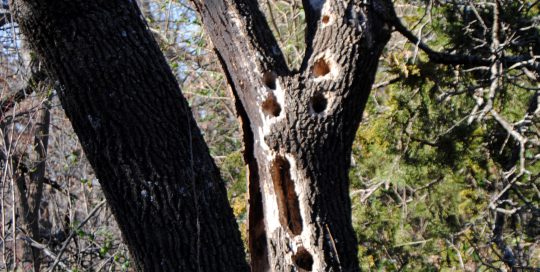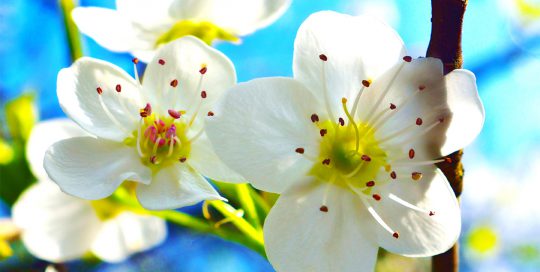How to Plant a Bare Root Tree
Okay, so you have the place to put it, know what kind of tree you want to plant, and you may have already acquired the tree, now what? It’s time to get dirty.
How to plant the tree depends on whether you get a bare root tree (no soil or pot and usually dormant) or a containerized tree. Let’s start with a bare root tree. It is normally cheaper, by the way. It may also be the only tree available at the time you wish to plant. Allow the tree’s roots to soak in water an hour or two before planting. However, this is not a case where more is better. Do not to allow the tree to soak for more than 24 hours.
When you start digging, size the hole to be large enough for the tree’s current root system. Include a little extra room for growth. Leave a small hill or mound at the very bottom of the hole and spread out the tree’s roots over that hill to encourage outward growth and to help stabilize the tree. Make sure the bottom of the hole is moist and add slow-release plant food. A plant food such as Osmocote only releases its nutrition into the soil if and when the tree’s roots take-up nutrition from the soil. Be sure to follow the directions on the package, or check the product’s website for information. Note, Osmocote sponsors PlantersPlace.com.
Keep the tree upright and straight in the planting hole. Refill around the roots with as much of soil dug from the hole as possible. It’s okay to add soil amendments as needed. Stake the tree if you are in a windy area. Thoroughly water your newly planted tree. The bare roots are likely in need of rehydration so this is one time when more (water) is actually better.
How to Plant a Containerized Tree
The process for planting containerized trees is slightly different. Dig a hole just slightly shallower than the root ball, maybe by one inch, and twice as wide as the container. This keeps the roots from settling too deep while still allowing them to penetrate the surrounding soil. Planting too deep is the leading cause of death in newly planted trees. If planting a B&B tree (roots wrapped in burlap), remove as much of the burlap as possible without breaking up the root ball. Remove all wires, twine, and cords. These have to potential to eventually strangle and kill the tree.
Make sure the bottom of the hole is moist. Use the soil that was dug from the hole to fill around the tree’s root ball. Mulch the tree to at least the drip line (where the tips of the leaves are), two to three inches deep, and keep it away from the trunk by at least 2 inches. Again, thoroughly water-in your new tree. I caution against fertilizing a tree during the first growing season with anything other than a slow-release plant food like Osmocote because too much nitrogen can burn the tender roots which will slow the growth and delay it becoming established.
How to Move a Small Tree to a New Location
Let’s say that you need to move a small tree due to construction or some other reason that places the tree’s life in jeopardy. First prepare a new hole as described above. Then, dig as large a root ball as you can lift from around the tree that is going to be moved. Try to get as many of the roots as you can. You are going to damage roots, so don’t panic! After you get the tree dug out, prune at least a third of the canopy off. The reason for this is, those roots that you cut are now unable to support the top of the tree, so by pruning the top you are equalizing the root-to-leaf ratio.
You Don’t Have to Wait
One last thin. You don’t have to wait until Arbor Day in your State to plant a tree. In many places throughout the country, fall is a good time for planting, especially in the south. There is a wise old tree-planter’s saying that goes something like this, ‘The best time to plant a tree was twenty years ago, the next best time is now!’

